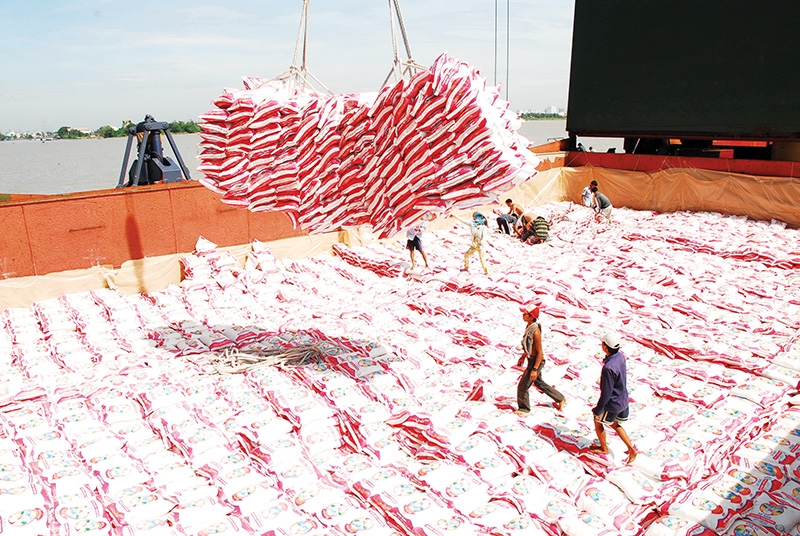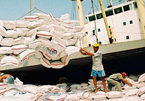 |
| Rice exporters gear up to penetrate EU arena |
On September 22, Loc Troi Group JSC exported the first batch of 126 tonnes of fragrant rice to the EU. To reach this, LocTroi upped its planting methods and quality control for the EU market in 2018. So far, the company has exported over 10,000 tonnes of rice to the EU market.
Backed by the tariff exemptions under the new EU-Vietnam Free Trade Agreement (EVFTA), LocTroi chairman Huynh Van Thon said that the group aims to become one of the major rice exporters to the EU. The company will mobilise all its resources to satisfy the EU’s strict quality requirements, expanding its growing area and export volume and diversifying varieties.
Meanwhile, at the end of August Trung An Hi-Tech Farming JSC also exported its first batch of fragrant rice in line with EVFTA commitments. Pham Thai Binh, the company’s general director, said that the shipment is part of the company’s current contract to export 3,000 tonnes of rice to Europe.
Binh said the company made early preparations during the EVFTA negotiation process to increase its rice exports. Among them, food safety standardss were Binh’s focus as the bloc refuses products exceeding pesticide residue limits. Therefore, Trung An focused on international standards for planting, harvesting, preserving, and processing.
Elsewhere in 2019, Vinaseed also exported over 2,000 tonnes of rice to the EU with turnover of $2 million. The group inaugurated the Centre of Seed and Agricultural Product Processing Industry in Dong Thap province last year. Covering five hectares, the centre has capacity to process and preserve 100,000 tonnes of rice and 50,000 tonnes of seeds per year.
Nguyen Quang Truong, general director of Vinaseed said, “With modern lines and technology from Japan, the new centre can help us to produce rice meeting the EU’s rigorous inspection procedures, while preserving its natural taste.”
In addition, Vinaseed has also purchased an 800ha forest in Kien Giang’s Hon Dat district. The company will spend 3-4 years on preparing the land for agricultural use.
According to statistics from the Ministry of Planning and Investment, Vietnam’s rice exports to the EU reached over $1.2 million in August, up 93.5 per cent against July and 35.6 per cent on-year. Currently, many Vietnamese rice producers are negotiating new contracts with European partners.
While these efforts show the hard work of domestic companies in trying to raise their exports to the EU, it will remains tough to conquer the market for some time.
Quach The Phong, co-chair of the Food, Agri, and Aqua Business Sector Committee under EuroCham, said that rice and products thereof are a sensitive category in the EVFTA. The agreed export quota from Vietnam to the EU is set at 80,000 tonnes per year, including all types of rice. For comparison, in 2018 Vietnam exported only around 20,000 tonnes to the EU.
The EVFTA only helps with a fraction of the Vietnam’s total export volume, which is expected to reach 7 million tonnes this year. In the short-term, it is expected that there will be a positive price impact for the country’s rice exports. However, over the medium and long term, benefits include many aspects for improving technology transfer and trusts for a larger quota.
In addition to consumption rates, Vietnamese rice is facing tough competition from Thailand and Cambodia. Between September 2019 and March, the EU imported 30 per cent of its rice from Thailand and 27 per cent from Cambodia as well as 16 per cent from Pakistan, 15 per cent from India, and only 6 per cent from Vietnam, according to a report by the European Commission in April.
“Even though Vietnamese rice has advantages in terms of pricing, it is still difficult to change the consumption habits of European customers, which is likely to pose obstacles for local producers to fully take advantage of the EVFTA,” Binh said.
On the same note, Phong added that some firms able to export to the EU will have opportunities to strengthen their production locally as well as to understand and further adapt to EU standards as both the Ministry of Agriculture and Rural Development (MARD) and the Ministry of Industry and Trade are closely observing and regulating the export process to follow commitments.
“With the help of government bodies here, this can become a reality to improve the entire rice export industry. This initiative is also important since the MARD has identified that a value-based export direction for rice will be the future for Vietnam, rather than a volume-based one,” Phong stated. VIR
Thanh Van

Vietnam’s rice exports to EU sell at good prices
With the new EVFTA, more and more Vietnamese rice is being shipped to the EU. Scented rice in particular is being sold at high prices.